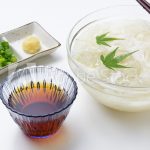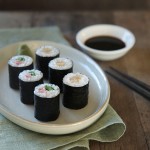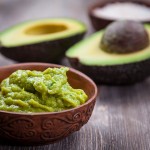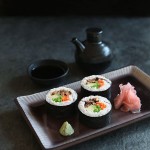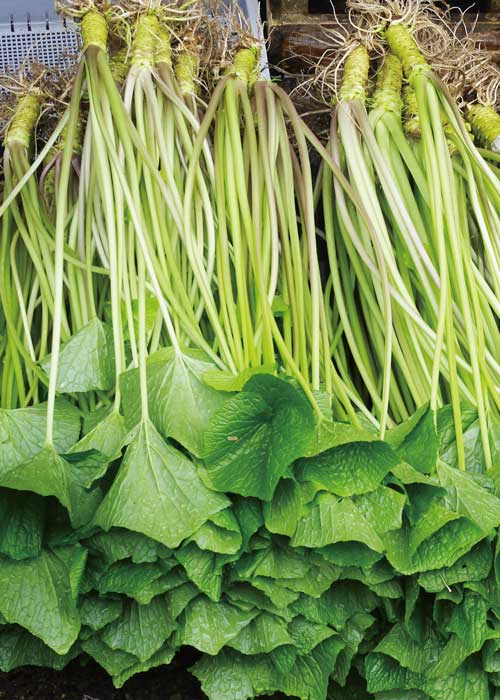
While soy sauce, miso, mirin, vinegar, and sea vegetables may shape the taste of many of Japan’s most celebrated dishes, the secret element behind the complex taste of Japanese cuisine can be found in its use of unique spices. Japan has a wide array of fragrant and flavorsome spices that add unmistakable accent and depth, playing an important role in enhancing the country’s food culture.
Mitoku offers an extensive selection of the most popular organic Japanese spices, including wasabi, yuzu, Japanese chili peppers, and Japanese ginger – each vibrant and highly aromatic, with its own characteristic flavor. Experience a new range of taste sensations with our organic spice range, introduced here.
-
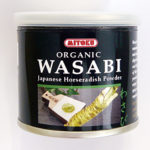
Organic Wasabi Powder
Mitoku’s wasabi powder, made with authentic organic wasabi, perfectly captures the distinctive bite of this strong, aromatic spice. To prepare the powder into a paste, add water and mix. When mixed to a paste, Mitoku’s wasabi powder turns a dull greenish-gray. This is in contrast to products containing no wasabi, which are typically bright green.
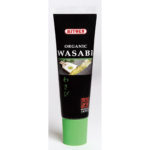
Organic Wasabi Paste
This ready-to-use organic wasabi paste that contains authentic, organic Japanese wasabi without any artificial preservatives, dyes, or colorings, making it the finest quality wasabi paste on the market today. The whole wasabi plant is used – leaves, stems, and roots – in the preparation of the paste, since each part has its own characteristically pungent flavor. This paste makes using wasabi so simple that it is a great way to explore the versatility of this fiery condiment.
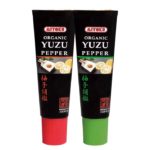
Organic Yuzu Pepper Paste
This paste combines the bold heat of chili and the citrus bite of yuzu. Its refreshing burst of heat helps highlight the flavors of other ingredients, elevating dishes to a new level. Try in sauces, as a condiment with deep-fried food or as an accent to noodle dishes. Take your pick from two variations – yuzu blended with either red pepper or green pepper.
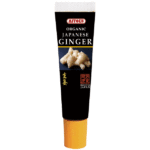
Organic Ginger Paste
Mitoku’s ginger paste is made with high-quality Japanese ginger root. It is 90% ginger root with a touch of lemon juice and sea salt. Its aroma and flavor are so intense that it tastes almost as delicious as fresh ginger. No preservatives or colorings are used. This handy paste is easy to blend in soups, noodles and marinades, as well as in desserts and drinks.
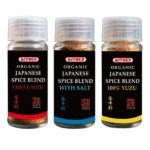
Organic Japanese Spice Blends
Chili & Yuzu / Chili & Yuzu with Salt / 100% Yuzu
Combining various spices unique to Japanese cuisine, Mitoku’s organic blends transform dishes with pleasant twists. Every item in this range is made using simple arrangements of spices, without any additives. The chacteristic flavors of the Japanese red chili pepper taka no tsume (hawk claw chili) and Japanese yuzu create an exquisite balance of heat and sweetness. Experience the intense flavors of these Japanese spices by adding them to your favorite dishes.
Yuzu fruit
 Yuzu is a highly fragrant Japanese citrus, with a tart flavor reminiscent of grapefruit with hints of orange blossom. The zest and juice of this versatile fruit are used extensively in cooking, and are equally at home in savory and sweet dishes. Yuzu juice is often blended to create seasonings and dipping sauces, such as yuzu ponzu. Its bright and aromatic zest is sometimes used as a garnish, and is becoming increasingly popular in baking and desserts. In addition to its intense, floral fragrance and fresh, sweet-sour flavor, yuzu also boasts high levels of vitamin C.
Yuzu is a highly fragrant Japanese citrus, with a tart flavor reminiscent of grapefruit with hints of orange blossom. The zest and juice of this versatile fruit are used extensively in cooking, and are equally at home in savory and sweet dishes. Yuzu juice is often blended to create seasonings and dipping sauces, such as yuzu ponzu. Its bright and aromatic zest is sometimes used as a garnish, and is becoming increasingly popular in baking and desserts. In addition to its intense, floral fragrance and fresh, sweet-sour flavor, yuzu also boasts high levels of vitamin C.Wasabi has become well-known outside of Japan due to the widespread popularity of sushi. Its invigorating flavor and spicy punch provide an ideal accent to the subtle flavors of raw fish. Wasabi is an especially good match with red-fleshed and oily fish, such as tuna or salmon. While wasabi can also be served with white fish, grated ginger is preferred. The wasabi is either applied directly to the sushi topping and pressed into the rice or added to soy sauce for use as a dip. The same kind of dip can also be used for sashimi. In Japan, wasabi is also traditionally added to soy sauce or tsuyu as a broth or dipping sauce for soba or udon noodles.
The uses of wasabi are, however, not limited to traditional Japanese cuisine. Wasabi can be combined with soy sauce or olive oil and used to add zest to everything from dips to dressings, vinaigrettes, and mayonnaise. It can also be used to give an extra kick to stir-fries. Another option is to combine wasabi with other ingredients as a marinade for tofu, tempeh, or vegetables. There are a wealth of wasabi possibilities, so we recommend trying out different things and experimenting.
To prepare wasabi powder, use two parts lukewarm water and one part powder and mix to a paste. Cover the paste and let it sit for 5~10 minutes to allow the flavor to heighten. 5g makes about two to three servings. When mixed in this way, powder made using authentic wasabi will form a dull greenish-gray paste, whereas wasabi powder adulterated with artificial colorings will be bright green. This condiment packs a hefty punch, so it is best used sparingly. Make a fresh batch for each use.
Related Recipes




